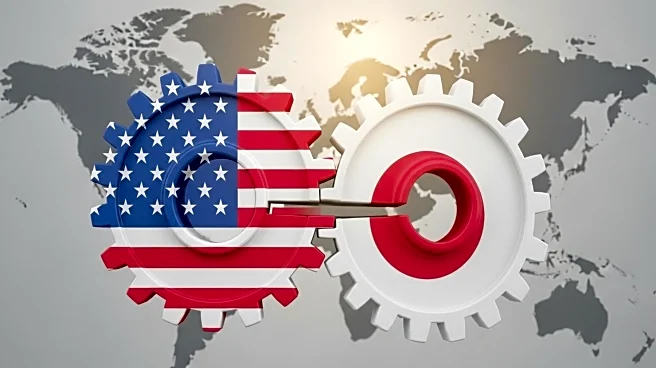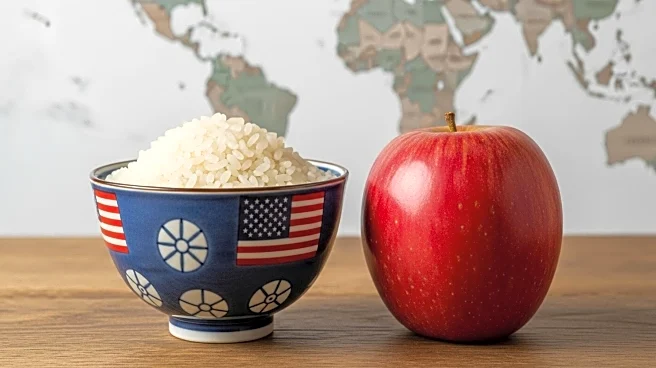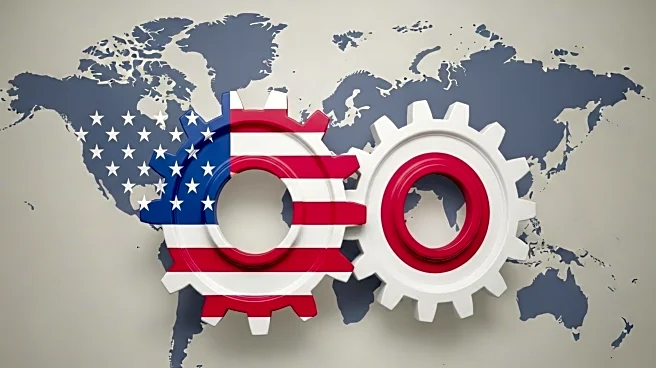What's Happening?
The U.S.-Japan trade agreement, finalized in July 2025, has significantly altered economic dynamics between the two countries. The agreement reduces tariffs on Japanese automobiles from 25% to 15% and includes a $550 billion investment package from Japan into U.S. strategic sectors. This has created sector-specific impacts, particularly in manufacturing and agriculture. Japanese automakers like Toyota and Honda have faced tariff burdens, but the agreement opens new markets for U.S. firms like General Motors and Ford. Additionally, the 'China Plus One' strategy has led Japanese manufacturers to diversify production to countries like Vietnam and Malaysia.
Why It's Important?
The trade agreement is poised to benefit U.S. industries, particularly agriculture, with increased exports to Japan. However, Japanese automakers may face increased competition and pressure to innovate. The diversification of supply chains away from China introduces new geopolitical and operational risks, affecting global manufacturing dynamics. The agreement also impacts U.S. pharmaceutical production, reducing reliance on foreign-made medicines, which could have long-term implications for healthcare and trade policies.
What's Next?
Investors are advised to adopt a hedged approach, focusing on companies with diversified supply chains and strong R&D capabilities. Monitoring earnings reports from Japanese firms and U.S. agribusinesses will be crucial to understanding the full impact of the trade agreement. The deal provides short-term stability but leaves unresolved tensions, which may influence future trade negotiations and economic policies.












